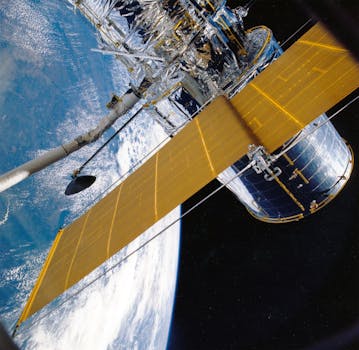GEO Satellites: Understanding the Technology and Applications of Geostationary Earth Orbit Satellites
GEO satellites, or geostationary earth orbit satellites, are a type of satellite that orbits the earth at an altitude of approximately 36,000 kilometers, remaining stationary relative to a fixed point on the earth’s surface. This unique characteristic allows GEO satellites to provide a wide range of services and applications, including telecommunications, earth observation, and navigation. In this article, we will delve into the technology and applications of GEO satellites, exploring their history, design, and uses.
History of GEO Satellites
The concept of GEO satellites was first proposed by scientist Arthur C. Clarke in 1945, who suggested that a satellite in geostationary orbit could be used for telecommunications purposes. The first GEO satellite, Syncom 2, was launched in 1963, and was used for experimental communications purposes. Since then, the use of GEO satellites has expanded dramatically, with thousands of satellites now in orbit around the earth. GEO satellites have played a crucial role in the development of modern telecommunications, providing services such as television broadcasting, telephone communications, and internet connectivity.
Design and Technology of GEO Satellites
GEO satellites are designed to operate in the harsh environment of space, with extreme temperatures, radiation, and vacuum conditions. They are typically equipped with solar panels to generate power, and use propellant to maintain their orbit and attitude. GEO satellites use a range of technologies, including transponders, antennas, and transceivers, to receive and transmit signals. They are also equipped with navigation and control systems, which allow them to maintain their position and orientation in space.
Applications of GEO Satellites
GEO satellites have a wide range of applications, including telecommunications, earth observation, and navigation. They are used for television broadcasting, providing services such as direct-to-home broadcasting and cable television. They are also used for telephone communications, providing services such as mobile phone networks and international telecommunications. In addition, GEO satellites are used for earth observation, providing data on weather patterns, climate change, and natural disasters. They are also used for navigation, providing services such as GPS and other satellite navigation systems.
Future Developments in GEO Satellites
The use of GEO satellites is continuing to evolve, with new technologies and applications being developed all the time. One of the most significant developments is the use of high-throughput satellites, which provide faster and more efficient communications services. Another development is the use of small satellites, which are smaller and more cost-effective than traditional GEO satellites. These developments are expected to play a major role in the future of telecommunications and earth observation, providing new and innovative services and applications.
